Many plants grown throughout the world have been known to heal and boost mental and physical well-being. Today, like centuries before, they are being used as a complement or even substitute to manufactured medicines and prescriptions.
These are 9 of the most effective therapeutic plants with strong scientific evidence to support their safe use. Growing them in a garden is a satisfying way to experience their effects. They are a plus for your wellness regimen, act as an organic pesticide for healthy plants in your garden, and can be mulched to boost soils.
First, find out if the plants are grown in your area. Then, talk with your healthcare practitioner before starting any new health treatments to avoid drug interactions and to see if using the specific plant is an appropriate choice for you.
Ginkgo
One of the oldest homeopathic plants and an important herb in Chinese medicine, the dried leaves can make tea and also be used to make extracts, tablets, and capsules. The tree grows best in partial to full sun. It is highly tolerant of many well-drained soils, pH, salt, and pollution.
Benefits: boosts brain health. Recent research is exploring its effect on diabetes and bone healing.
Possible side-effects: upset stomach, dizziness, headache, hard on the liver so avoid long-term use.

Turmeric
Originating in India, this plant has been used as a medicinal herb for over 4,000 years! It is harvested to make a powder, a spice with a strong/bitter flavor similar to ginger. You can plant a turmeric rhizome, an immature length of turmeric root, which doesn’t require sunlight. However, it needs to be monitored for water. You can plant inside in pots and planters and then transfer them outside after about 6-10 months before harvesting
Benefits: used topically to relieve discomfort with arthritis and as an antioxidant-rich addition to many dishes; has shown promise to treat dermatologic diseases.
Possible side-effects: potential stomach problems if used long-term (safety increases when used in cooking or tea).

Evening Primrose
True to their namesake, the evening primrose blooms as the sun begins to set. The lovely yellow flower produces a soothing oil; the leaves and roots can also be eaten. The wildflower does well in almost any part of the U.S. The plant loves dry open areas and is often grown from seeds. As a biennial, the flower will reseed itself.
Benefits: alleviates symptoms of PMS and mild skin conditions like eczema, atopic dermatitis, and diabetic neuropathy.
Possible-side effects: safety uncertain during pregnancy; studies inconclusive about long-term impacts
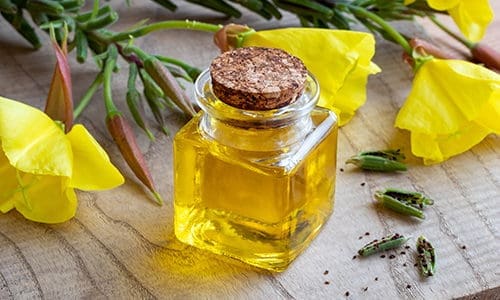
Flaxseed
Harvested for thousands of years, flaxseed is one of the safest choices among plant-based dietary supplements; it is available as oil, tablets, and flour. The species of flax grown for fiber and seed production is the annual named Linum usitatissimum (Latin for “the most useful kind of flax”). Flax is grown like a grain crop with many plants close together. Each plant stands 3 feet tall and has narrow, pale green leaves about an inch long. There are blue or white small, round flowers with five petals at the top. Plan on a 4-foot square to harvest enough fiber for a basket and ample seeds for a batch of crackers or bread. The plant loves full sun with deep, fertile well-drained soil and grows best in cooler weather.
Benefits: great source for omega-3 fatty acids that aids in decreasing obesity, regulating blood pressure, and reducing inflammation and hot flashes.
Possible side-effects: can affect estrogen production in women especially if they are pregnant or have a history of cancer
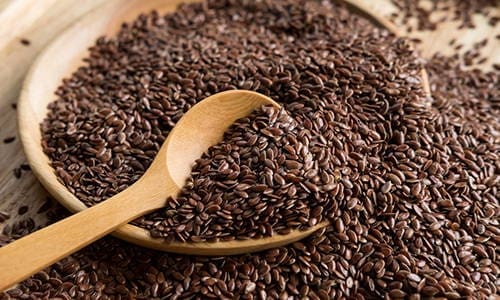
Echinacea
These purple coneflowers (species E. purpurea) have bloomed for centuries as a medicine in the form of extracts, juice, and teas. Dating back to the 18th century, Native Americans have harvested these easy-growing flowers to make a powder to be brewed into tea. The coneflower flourishes in fairly dry, nutrient-rich soil and full sun. They grow to a height of 3-4 feet, produce flowers 4-6 inches across, and can be easily grown from seeds.
Benefits: boosts immunity when a virus is present; shortens symptoms of the common cold, bronchitis, and upper respiratory infections.
Possible side-effects: upsets the stomach, hard on the digestive tract, allergic reactions.
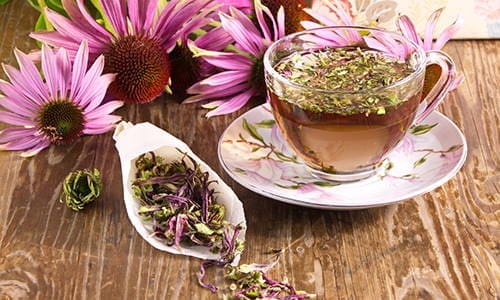
Chamomile
A flower that resembles small daisies with its white petals and yellow center, it is a popular tea flavor with over 1 million cups consumed per day the world over! There are two types of chamomile: German chamomile, an annual thriving in the Midwest; and Roman chamomile, an apple-smelling perennial that attracts pollinators. The flower thrives in full sun but tolerates partial shade and grows 8-24 inches (i.e., the Roman variety is shorter and sprawls rather than standing upright like the German variety).
Benefits: calming for anxiety and stress; helps with insomnia.
Possible side-effects: can cause allergic reactions.

Garlic
Considered a natural wonder medicinal plant, it is characteristically hardy and easy to grow. The cloves can be planted pointy part down, between 4-6 inches deep and 1-2 inches apart in rich soil. You can prepare medicinal pickled garlic that will last for almost a year. Besides garlic, you need apple cider vinegar and honey.
Benefits: draws impurities out of the body, treats and prevents gum disease, helps treat common cold and flu, heals cold sores, and soothes yeast infection.
Possible side-effects: unpleasant breath or body odor, heartburn, and upset stomach (mostly with raw garlic).

California Poppy
This fast-growing perennial (in zones 8-10 and an annual elsewhere) with bright orange, yellow, pink, and white flowers is the official state flower of California. Growing a foot tall, the poppy thrives in full sun and average soil. The parts that grow above the ground are used to make tea, liquid extract, and capsules.
Benefits: helps with sleeping, aches, nervous agitation, bedwetting in children, diseases of the bladder and liver; promotes relaxation.
Possible side-effects: insufficient information related to those who are pregnant and breastfeeding, so it’s best to avoid use; stop using at least 2 weeks before a scheduled surgery as it may cause undo sleepiness when combined with anesthesia.
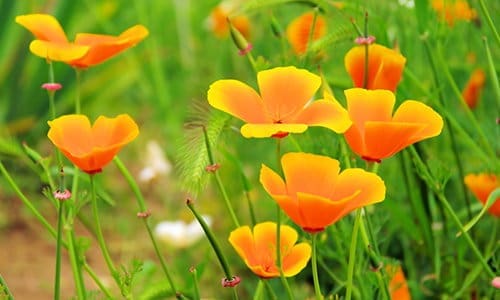
Moringa
Native to northern India and Bangladesh, the plant (with 13 varieties) grows in other tropical and subtropical places. Requiring little maintenance, it’s drought resistant and can tolerate high temperatures. If you reside in a colder climate, it can be moved indoors in cooler weather. Regular pruning prevents the tree from becoming too tall. Grown in full sun and well-drained, sandy, or loamy soil, the plant’s roots, seeds, flowers, and leaves are packed with vitamins and minerals. Moringa can be used as a powder, pill, oil, or tea.
Benefits: helps your body heal and build muscle, lowers blood pressure, and reduces fat in the blood and body.
Side-effects: insufficient information related to those who are pregnant and breastfeeding, so it’s best to avoid use.
Related: The 10 Best Trees For Homesteaders
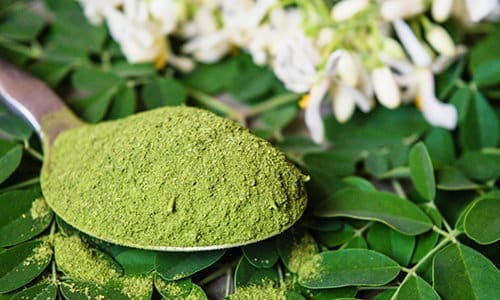
Choosing to add a few medicinal plants to your garden is a step toward increasing optimal health. Like the many gardeners before you, you will learn how to successfully grow and use the plants to maximize their wellness benefits.
You may also like:
 How To Keep Your Garden Alive During Winter
How To Keep Your Garden Alive During Winter
If You See This Plant in Your Backyard, Burn It Immediately! (Video)
The Ultimate Guide To Composting
18 Plants That Should Never Be Planted Together
If You Have This Plant in Your Backyard, You Will Never Run Out of Soap









This is great info, thanks! I already have some and use them for my health problems. Since I am not fond of drugstores and pills, I started using plants in the ’90